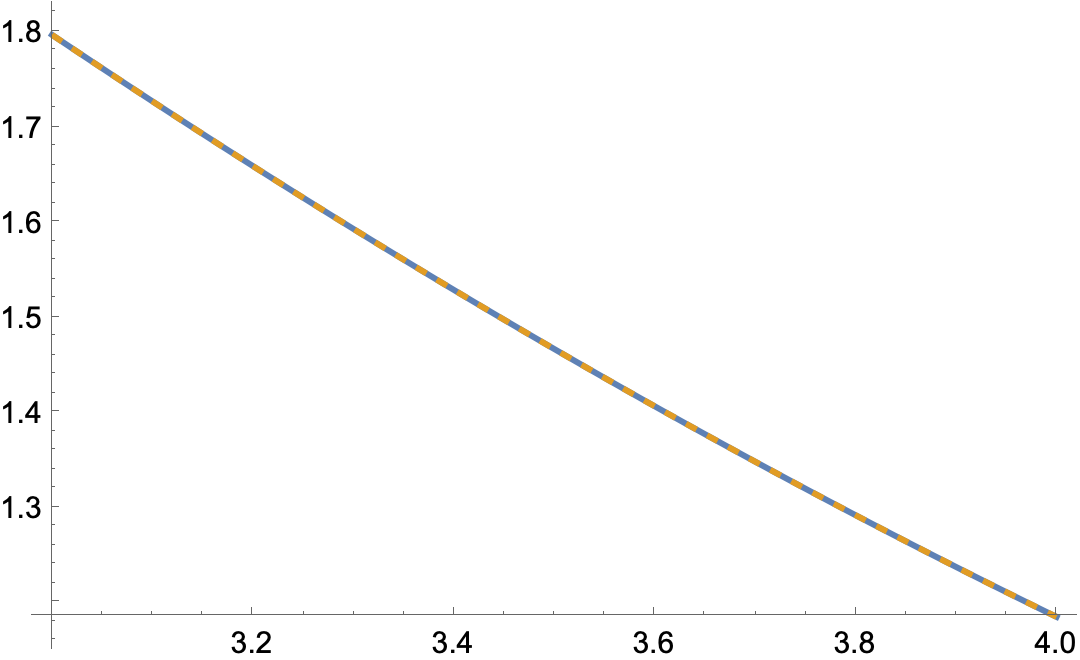I am trying to plot a function, but the output is not continuous. Here is my code
Plot[(
E^(-(s/lm))
v (lm -
2 lm Hypergeometric2F1[1, -(lg/lm), 1 - lg/lm, E^(s/lg)] -
2 E^(s/lm) (s - lg Log[1 - E^(s/lg)])))/H, {s, 3, 4}]
I then tried to plot the imaginary part to see if the empty space between the lines in the above graph comes from an imaginary number.
Plot[Im[(
E^(-(s/lm))
v (lm -
2 lm Hypergeometric2F1[1, -(lg/lm), 1 - lg/lm, E^(s/lg)] -
2 E^(s/lm) (s - lg Log[1 - E^(s/lg)])))/H], {s, 3, 4}]
The imaginary part is small, and I am not sure if the imaginary part is numerical error, or they are these small imaginary parts that make the output of the plot to have empty spaces between the lines. Could someone please help me?
I used H=0.1, v=0.5, lg=1; lm=2;

